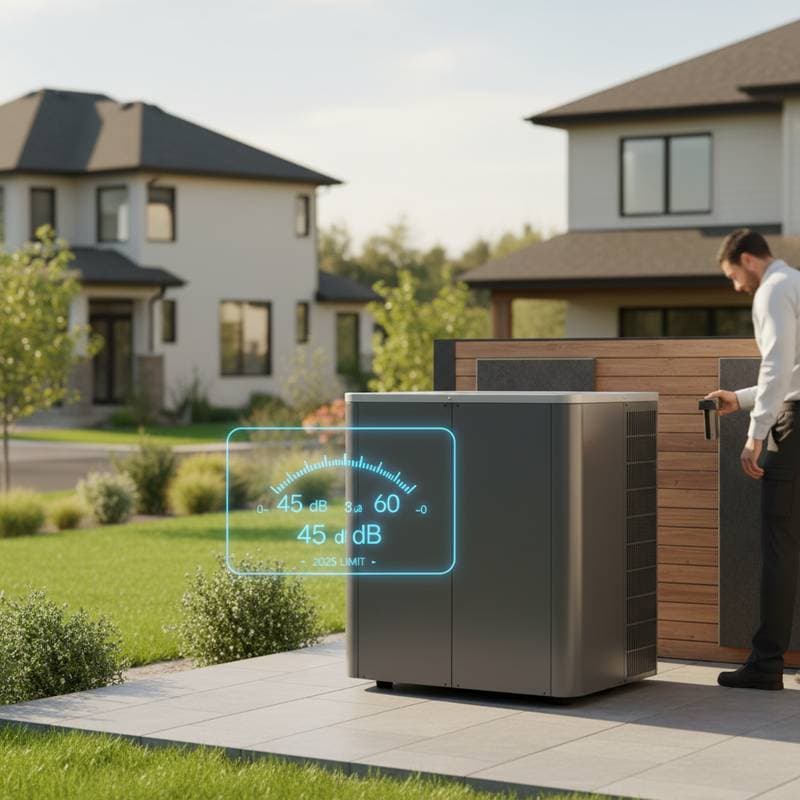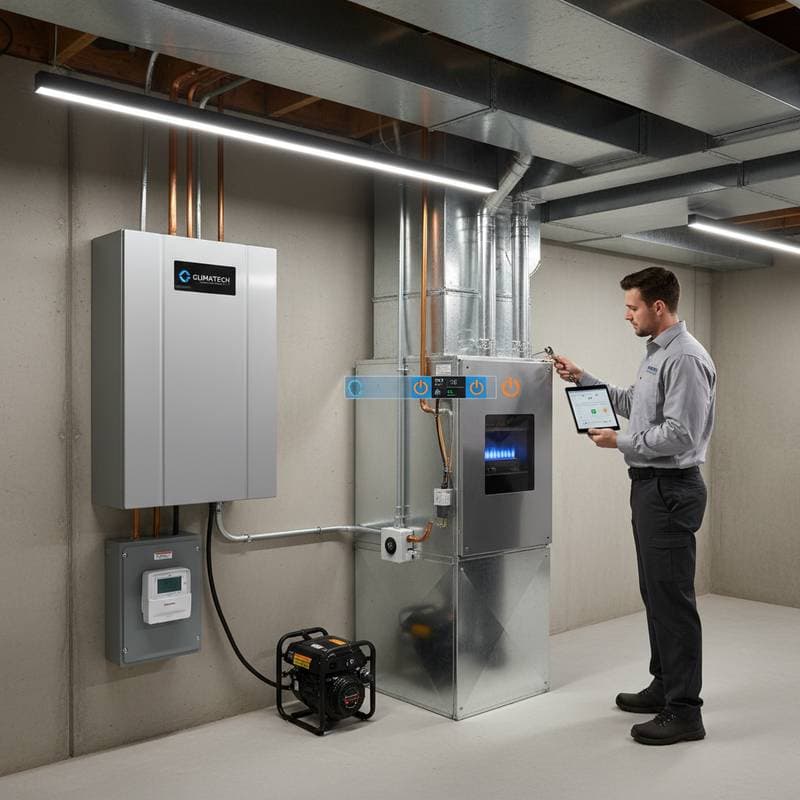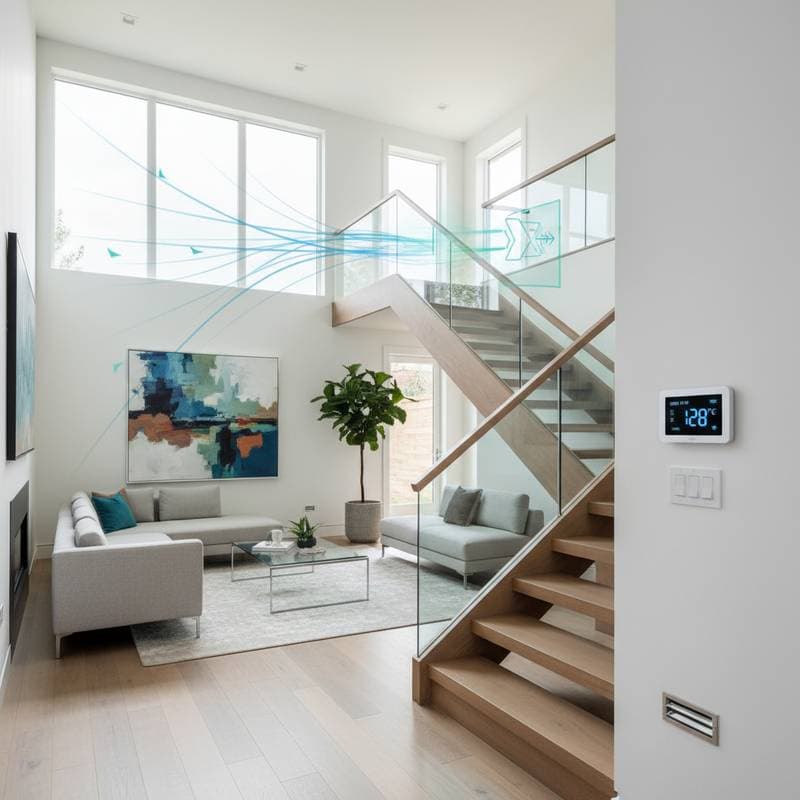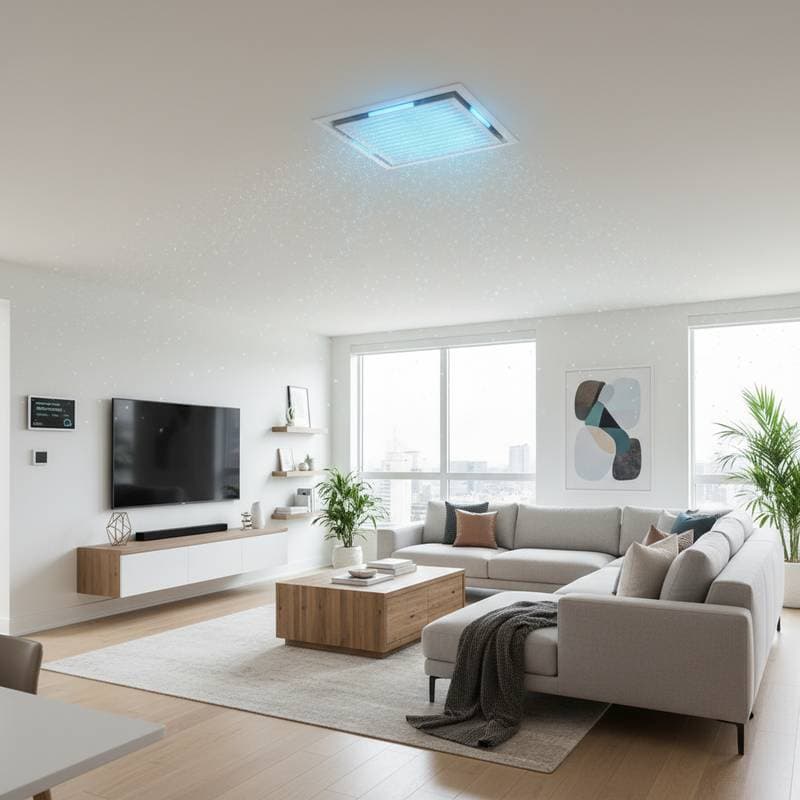Save 38 Percent on Energy with HVAC Zoning in 2025
Homeowners seeking to reduce energy consumption by up to 38 percent find HVAC zoning among the most effective solutions. This approach divides a residence into distinct temperature zones, each managed separately. Consequently, heating and cooling target only occupied areas, which leads to decreased utility expenses, enhanced comfort levels, and prolonged equipment durability. The following sections detail the mechanics of zoning, associated expenses, anticipated savings, and implementation strategies.
| Item | Average Cost |
|---|---|
| National Average Cost for Zoning Upgrade | $2,800 - $4,500 |
| Typical Range for Multi-Zone Installation | $1,700 - $6,000 |
| Energy Savings Potential | Up to 38 Percent |
| Payback Period | 2 - 5 Years |
Average HVAC Zoning Costs
HVAC zoning systems generally range from $1,700 to $6,000 in total cost, influenced by the quantity of zones, overall system capacity, and project intricacy. Homeowners typically allocate $3,000 to $4,000 for configurations involving two or three zones. Retrofitting an established HVAC setup incurs marginally higher fees than integrating zoning into a new build, as professionals must adapt current ductwork and electrical components.
Cost Breakdown by Project Type
| Project Type | Average Cost |
|---|---|
| New HVAC with Zoning | $2,800 - $5,500 |
| Retrofit Zoning System | $3,000 - $6,000 |
| Smart Thermostat Add-On | $250 - $750 per Zone |
| Additional Dampers and Wiring | $300 - $600 per Zone |
Expenses fluctuate based on system sophistication. Basic manual zoning, which relies on simple dampers, proves more economical. In contrast, automated variants incorporating smart thermostats and sensors deliver superior efficiency and user comfort, albeit at an elevated initial investment.
Key Factors That Affect HVAC Zoning Price
Multiple elements determine the final expense of an HVAC zoning project. A clear grasp of these components enables precise budgeting and strategic choices.
Number of Zones
Every zone demands its dedicated thermostat, damper, and wiring infrastructure. As the count of zones increases, so does the overall expenditure. Residences often realize optimal results with two to four zones, for instance, by isolating living quarters, sleeping areas, and lower levels.
Home Size and Layout
Expansive or multi-level properties necessitate additional dampers and extended duct pathways, thereby elevating material and labor demands. Structures featuring open designs simplify zoning efforts compared to those with intricate configurations or abundant compact spaces.
Ductwork Condition
Pre-existing ducts exhibiting leaks or suboptimal design require remediation prior to zoning integration. Such sealing enhances airflow efficiency and curtails energy loss, though it contributes to heightened installation outlays.
Thermostat Type
Standard programmable thermostats remain cost-effective options. Advanced smart models, compatible with mobile applications and sensors, provide enhanced usability and accuracy. Premium controls may exceed several hundred dollars per zone yet substantially amplify energy conservation.
Labor and Installation Complexity
Adapting legacy systems demands extended effort, involving access to concealed ducts and electrical junctions. Regional labor rates, system specifics, and installer proficiency further modulate these costs.
Types of HVAC Zoning Systems
Various zoning methodologies suit different residential profiles and HVAC configurations. Each variant presents distinct benefits aligned with specific comfort priorities.
Traditional Ducted Zoning Systems
These setups employ motorized dampers within ductwork to modulate airflow per zone. Zone-specific thermostats transmit directives to activate or deactivate dampers accordingly.
Pros:
- Compatible with the majority of central HVAC frameworks
- Ensures uniform comfort in sizable residences
- Supports automation for meticulous temperature regulation
Cons:
- Necessitates duct alterations
- May disrupt completed interior spaces during setup
Ductless Mini-Split Zoning
Ductless configurations feature standalone air handlers positioned in individual rooms. Each handler operates via its independent thermostat.
Pros:
- Eliminates ductwork dependency
- Delivers efficient, low-noise performance
- Suits expansions, lower levels, or aged structures
Cons:
- Involves greater per-zone initial costs
- Features prominent indoor components
Smart Zoning Systems
These advanced systems leverage sensors, thermostats, and algorithms to adapt to occupant routines and automate adjustments. Integration with smart home ecosystems enables remote oversight.
Pros:
- Optimizes energy reduction
- Facilitates ongoing surveillance and programmed operations
- Appeals to technology-oriented residents
Cons:
- Entails premium equipment and setup fees
- Depends on stable internet connectivity
Signs You Need HVAC Zoning
Persistent temperature disparities, such as a chilly bedroom adjacent to an overheated living room, signal the potential value of zoning. Consider these common indicators:
- Inconsistent temperatures across levels or chambers
- Frequent manual thermostat interventions
- Continuous conditioning of unoccupied areas
- Elevated utility statements despite modern HVAC efficiency
- Conflicts among household members over settings
- Persistent thermal anomalies unresponsive to adjustments
Zoning addresses these challenges by empowering independent temperature management for each sector.
The HVAC Zoning Installation Process
Zoning deployment follows a structured sequence of phases. Familiarity with this progression aids in anticipating timelines, expenditures, and minimal household interruptions.
Step 1: Home Assessment
A qualified technician inspects the current HVAC apparatus, ducts, and insulation. This evaluation identifies optimal placements for dampers, thermostats, and central controls.
Step 2: Zone Design
Collaborate with the technician to define zone quantities and room assignments. Typical arrangements separate communal areas from private ones or distinguish upper from ground levels.
Step 3: Damper Installation
Motorized dampers integrate into duct lines to govern airflow distribution. Linkages connect each to a primary control unit responsive to thermostat inputs.
Step 4: Thermostat and Control Setup
Mount thermostats within designated zones and interface them with the control mechanism. Intelligent variants incorporate occupancy or variance-detecting sensors.
Step 5: System Calibration and Testing
Post-installation, the professional verifies operational integrity across zones. Balance checks confirm airflow consistency, temperature accuracy, and damper functionality.
Step 6: Homeowner Training
Receive instruction on thermostat or application navigation for optimal management. Guidance covers routine scheduling and upkeep protocols.
HVAC Zoning Labor Costs
Labor constitutes 30 to 50 percent of the aggregate project budget. Expect $800 to $2,500 for typical residences, scaled by project demands. Intricate retrofits or intelligent integrations extend both duration and expense.
| Labor Type | Average Cost |
|---|---|
| Basic Zoning Installation | $800 - $1,500 |
| Complex Retrofit (Multi-Zone) | $1,800 - $2,500 |
| Smart System Configuration | $200 - $500 Additional |
Engage certified HVAC specialists to safeguard performance and longevity. Confirm licensing, insurance, and zoning expertise to avoid suboptimal outcomes.
Frequently Asked Questions About HVAC Zoning
How Does HVAC Zoning Save Energy?
Zoning curtails superfluous heating or cooling by focusing efforts on active spaces. This precision diminishes operational cycles and power requirements, potentially trimming bills by up to 38 percent.
Can I Add Zoning to My Existing HVAC System?
Affirmative; most ducted systems accommodate retrofits. A specialist examination of ducts ascertains feasibility for damper and panel additions sans extensive rebuilding.
How Many Zones Should My Home Have?
Two to four zones suffice for most households. Examples include delineating living from sleeping zones or upper from lower floors. Tailor the count to layout and usage dynamics.
Is HVAC Zoning Worth the Investment?
In residences plagued by thermal inconsistencies or steep energy costs, zoning recoups expenses in mere years. Its dual benefits of refined comfort and efficiency render it a prudent enhancement.
Do Zoning Systems Require Extra Maintenance?
Beyond routine HVAC care, zoning demands little additional attention. Regularly inspect thermostats, replace filters, and monitor damper motion.
Are Smart Thermostats Necessary for Zoning?
Not essential, yet they elevate performance and ease. Remote access, dynamic timetables, and device synergies refine control and amplify conservation.
Can Zoning Extend the Life of My HVAC System?
Indeed; reduced operational stress spares components like motors, compressors, and blowers. This mitigation lessens breakdowns and extends service intervals.
Implementing HVAC Zoning for Optimal Home Comfort
HVAC zoning empowers precise environmental control, slashing energy demands by conditioning solely utilized areas. This methodology yields up to 38 percent savings, mitigates equipment strain, and fosters uniform comfort.
To proceed, arrange a consultation with a certified professional. Inquire about system compatibility, projected reductions, and customized zone layouts. Solicit multiple estimates to secure competitive terms from skilled providers. Post-installation, experience sustained equilibrium, fiscal relief, and elevated livability throughout seasons.





